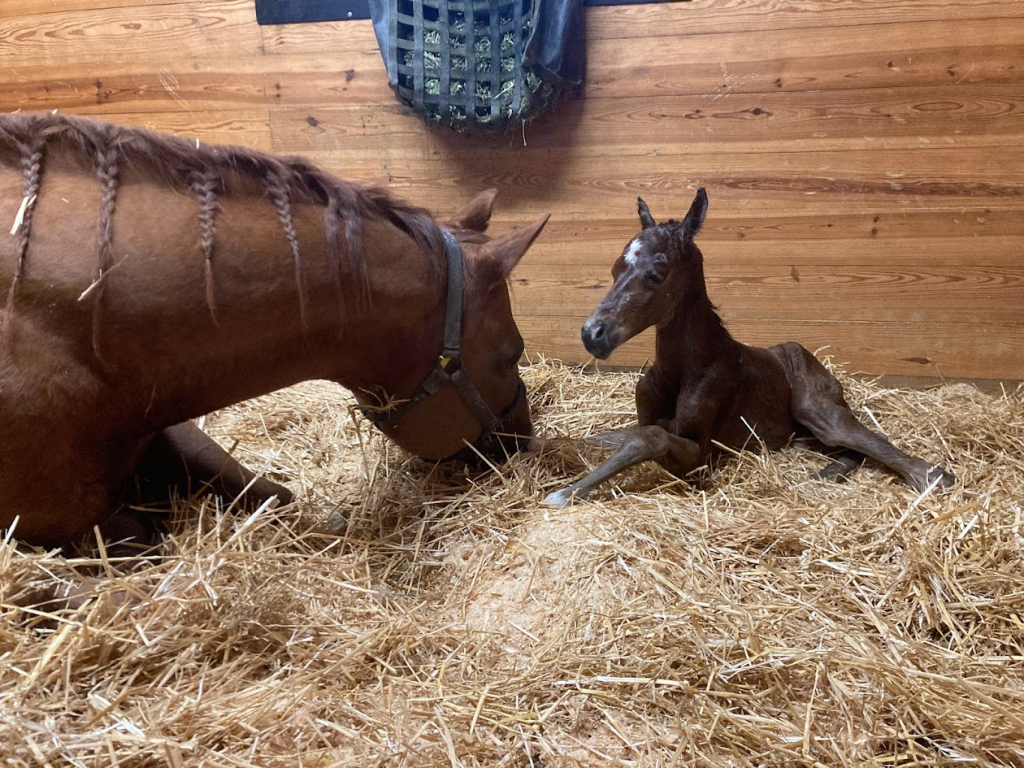Foal Heat
A mare will cycle (come into “heat”) shortly after foaling in order to produce a foal approximately the same time of year due to the nearly yearlong gestational length with an average of 335-345 days. Most mares will typically cycle approximately 7 days post-foaling; however, the time range can vary from 5-14 days following foaling.
Breeding During “Foal Heat” Cycle:
Advantages:
- Mare will foal approximately the same time the following year.
- Prevent the mare foaling later and later in the years going forward. Mares with this issue may need to remain open for a year to avoid mid-late summer foaling.
- Avoid early foaling mares not cycling after foal heat ovulation.
Disadvantages:
- Lower conception rates, especially in mares that begin to show heat in 5 days post foaling.
- Potentially increased pregnancy loss in mares conceiving on foal heat.
- Inadequate time for uterine contraction, repair, and healing.
- Stallion availability (depending on time of year).
Tips:
- DO NOT breed mares on “foal heat” if there has been a difficult birth (dystocia, retained placenta) due to increased potential for uterine infection, fluid retention, and poor uterine health. These conditions require time and rest to recover and repair, and likely will have a negative effect on conception rates.
- Turning mares out on pasture after foaling has been shown to increase uterine recovery and overall fertility compared to those mares confined to a stall.





